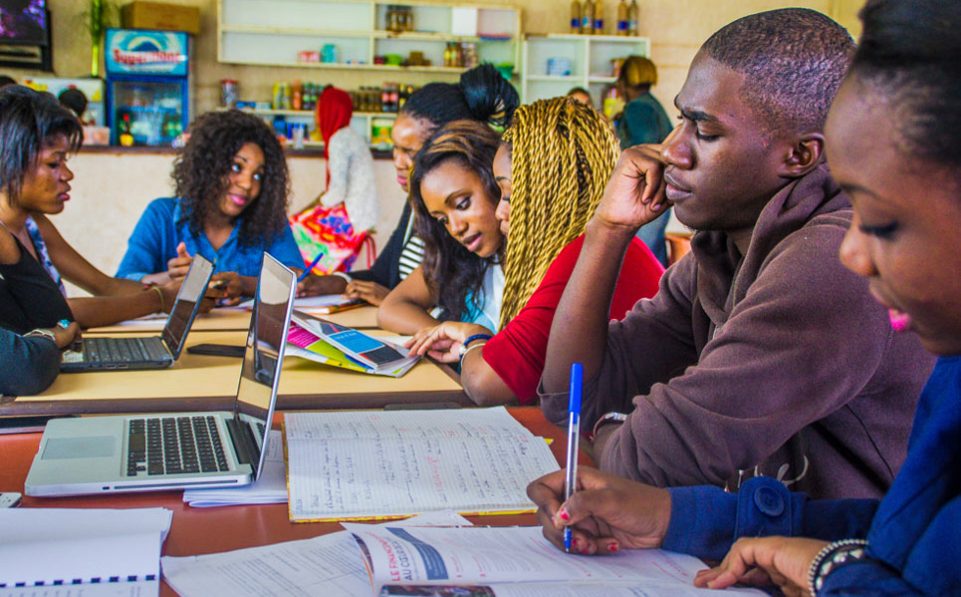Service-learning addresses the issue of academic relevance by connecting academic knowledge, skills and concepts with accomplishing an « authentic purpose » in the school and community. In this context, service-learning is an integral part of school improvement and contributes to that effort in the following ways.
- Grounded in how learning occurs: Service-learning meets a criterion of school improvement that often is missed. While improvement efforts often focus on financial, political or administrative solutions to education problems, service-learning is rooted in a sound understanding of education itself, taking its cue from how cognition and learning actually occur. Service-learning embodies the belief that knowledge is not merely transmitted from teacher to learner, but rather is gained by the learner through guided interaction with the environment.
- Develops critical thinking skills: Through service-learning, students learn to reflect on their experiences and develop critical-thinking skills, such as the ability to bring disparate elements of experience together in meaningful ways, to analyze information for patterns and deeper meaning, and to make evaluations and judgments.
- Benefits all students: Because it is an effective pedagogy and not specific to any one curriculum, service-learning supports and deepens the existing curriculum and aligns with national and state standards already in place. No group gets singled out because every student can benefit.
- Uses multiple intelligences: Service-learning engages the multiple intelligences, a core idea in education improvement, especially in curriculum development efforts. Service activities and corresponding reflection can be organized to address multiple ways that students learn. For example, students working with residents in a senior center can read aloud to the seniors, engage them in physical exercise and/or discuss historical events. Student reflections can range from creating a portfolio or journal, writing a song or delivering a speech.
- Makes real-world issues part of education: Service-learning presents students with issues and problems that cannot be neatly defined or solved. Encouraging students to « think outside the box » fosters development of problem-solving skills.
- Interdisciplinary learning is encouraged: Because service-learning requires students to think across the boundaries of traditional academic disciplines, students become more adept at integrating and applying what they are learning.
Service-learning Also Reinforces School Improvement in Other Ways.
- Develops workplace skills: Service-learning experiences early and regularly in a student’s education help to foster the development of important skills and positive attitudes toward work and the community. Research shows students learn best when they use interdisciplinary concepts and processes to solve ill-defined problems; function as members of multiple groups; use documents and sources of information other than textbooks; create products others can use; relate the work of the classroom to the world outside the school; influence and shape the course of their own learning; and model their performance upon that of competent adults. High-quality service-learning embodies these elements and provides students with rich and positive learning experiences that help prepare them for the world of work.
- Promotes equity: By facilitating heterogeneous grouping, service-learning allows students from a variety of backgrounds, ethnic groups, strengths and abilities to work together on real problems that provide unity and purpose beyond the classroom. It also has been found to provide extrinsic motivation for at-risk students, help special-education students develop concrete skills and competencies which often enable them to work alongside their nondisabled peers, and provide a holistic approach that can help immigrant students learn English language and culture.
- Fosters appreciation for cultural diversity: Service-learning helps foster in students a greater understanding, appreciation of and ability to relate to people from a wide range of backgrounds and life situations. It provides opportunities for youth not just to reach out to others but also to understand the value of differences among individuals and communities.
- Promotes changes in school culture: Service-learning can have a profound effect on the school culture because it creates new relationships between schools and communities. At the same time, the community itself becomes a learning environment that benefits from the schools that its tax dollars support. Service-learning also can create more collaborative relationships among teachers, administrators and other school personnel. When all members of the school community gradually become participants in this new process of learning, they develop a personal and collective stake in making something positive happen beyond the walls of the school.

